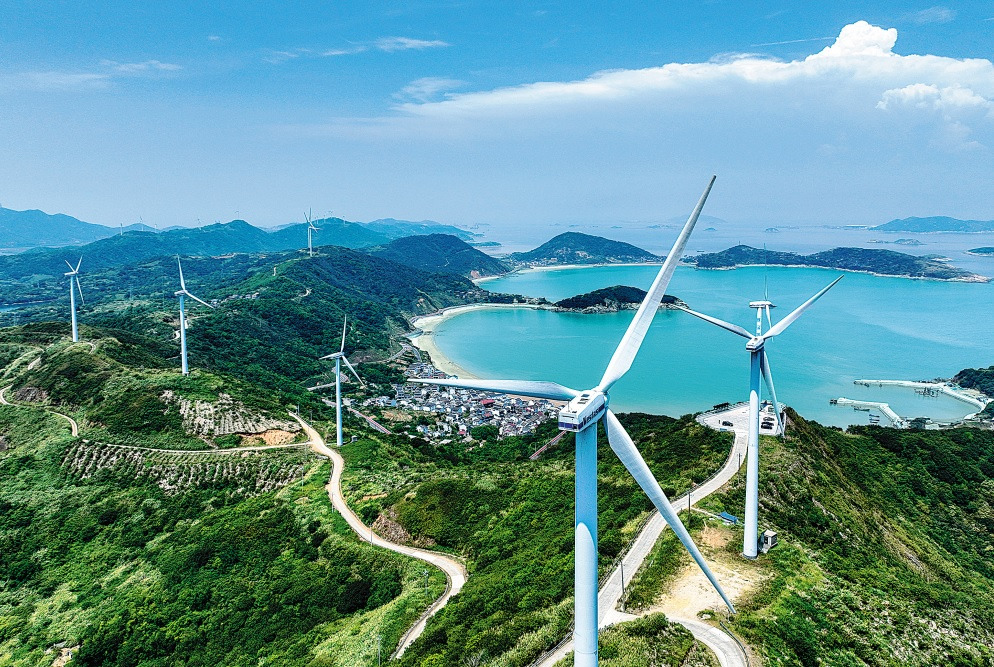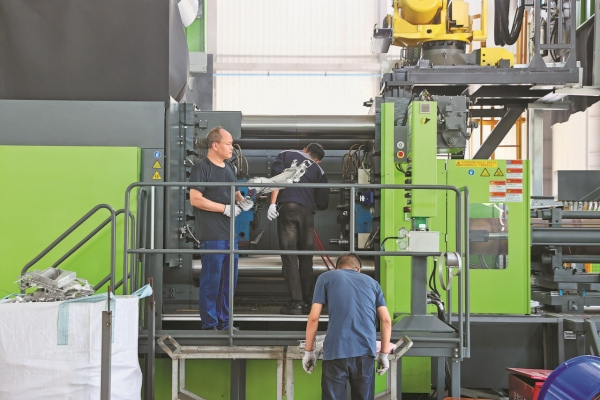
A wind farm generates power for grids in Zhoushan, Zhejiang province, on Aug 6, 2022. (Photo/Yao Feng, via chinadaily)
China will strive to eliminate heavy air pollution events in 70 percent of its major cities by 2025, according to an action plan unveiled on Thursday.
Jointly issued by 15 central government bodies, including the Ministry of Ecology and Environment and the National Development and Reform Commission, the plan vowed to reduce the country's average annual proportion of days with heavy air pollution to less than 1 percent.
The action plan was drafted against the backdrop of a "grim" air pollution control situation despite "remarkable" improvement to air quality, according to a media release from the ministry.
In 2021, the average density of PM2.5 — particulate matter with a diameter of 2.5 micrometers or less — reached 30 micrograms per cubic meter, down by 34.8 percent from 2015. In all, 87.5 percent of days last year had fairly good air quality, 6.3 percentage points higher than in 2015, it said.
The Beijing-Tianjin-Hebei region, however, still suffers from a high frequency of heavy smog.
"Severe air pollution events still happen in over half of the cities across the country," it said.
The ministry noted increasing ozone density as another prominent problem for air pollution control.
"Ozone pollution has become an increasingly prominent problem, especially in summer," it said.
"The gas is now the primary pollutant responsible for the excessive concentration of air pollutants in some cities."
The average density of ozone across the country has increased by 6.4 percent so far this year, it added.
Even a relatively low concentration of ozone near the ground can lead to lung damage and result in shortness of breath, though the ozone layer, which is about 20 kilometres above the Earth, helps shield from harmful ultraviolet radiation.
Hot periods usually result in higher ozone density, as sunlight and high temperatures can trigger a chemical reaction between volatile organic chemicals and nitrogen oxides, a major source of which is vehicle exhaust fumes.
The plan released Thursday pledged a series of actions to achieve the targets.
The country will endeavour to optimize its industrial structure further and promote the low-carbon transition in the energy sector, it said. Intensified efforts will be made to reduce coal consumption at a small scale in a non-concentrated manner.
More measures will be rolled out to strengthen the management of diesel-powered trucks, which are a major contributor to nitrogen oxide emissions, it said. An online monitoring platform, for example, will be established to monitor heavy-duty diesel-powered trucks.
Aside from carrying out measures to reduce emissions from diesel-powered trucks, the country will work to increase the proportion of cargo transported via railway by 0.5 percentage points by 2025.
Editor: Ye Ke, Yu Fei(Intern)

